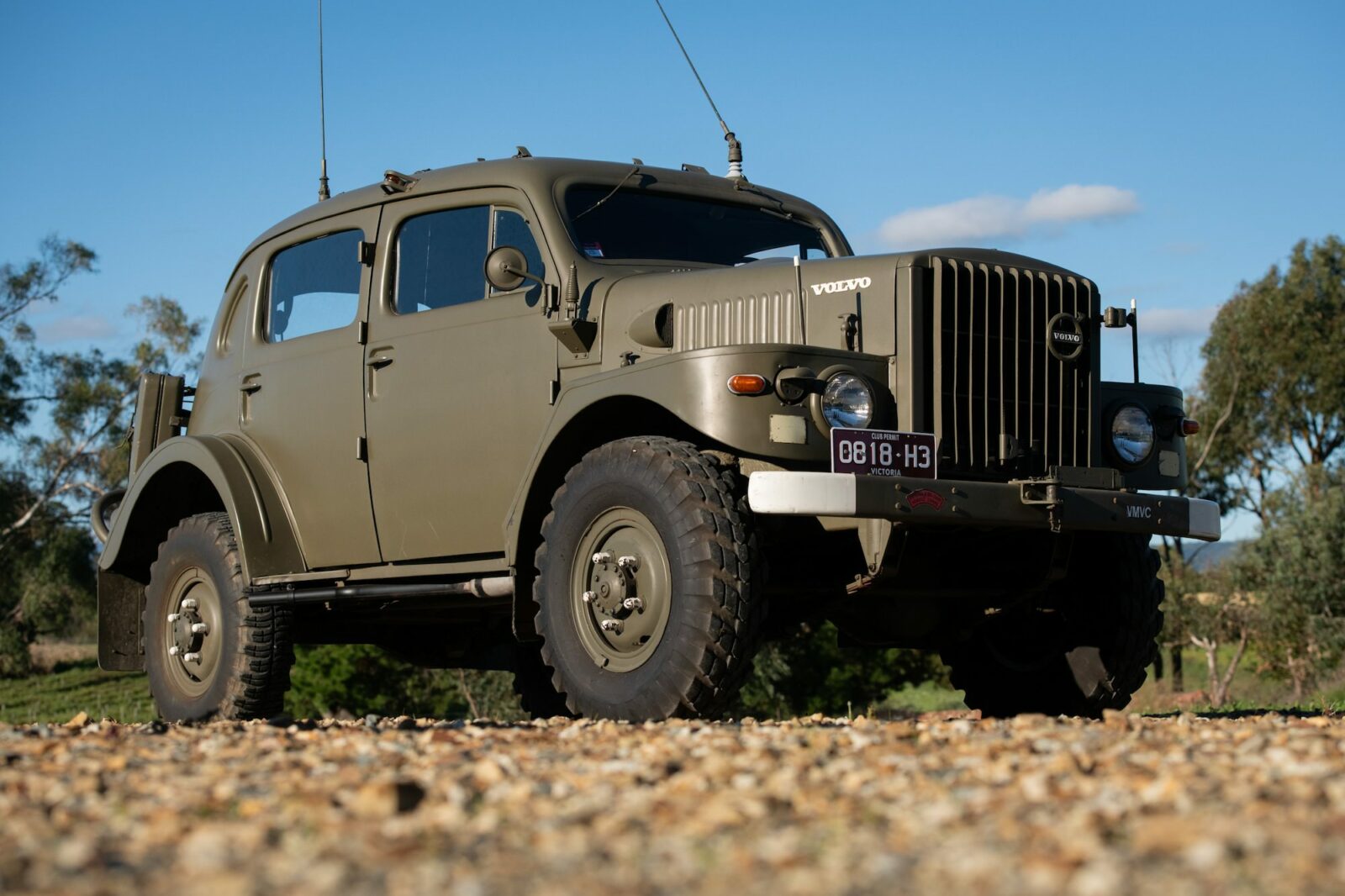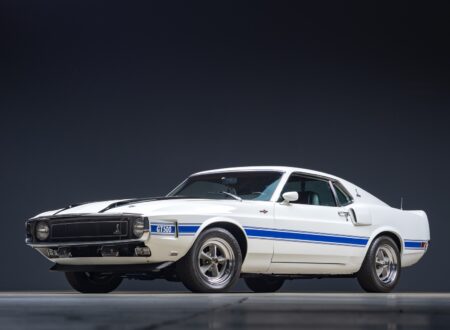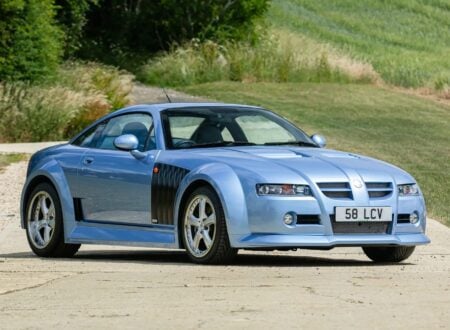This is a Volvo TP21 Sugga, it’s essentially a military 4×4 version of the Volvo PV800 series sedans from the late 1940s and early 1950s. The surviving examples of the Sugga are now highly collectible, and the 1954 example you see here is currently for sale.
The TP21, or the Sugga as it’s more commonly known, was the much more refined descendant of the WWII-era Volvo TPV – Volvo’s first serious foray into 4×4 development. The Swedish automaker also developed a civilian version of the Sugga, one of the first SUVs in history, but just two were made as it never caught on.
Fast Facts – The Volvo TP21 Sugga
- The Volvo TP21, known colloquially as the “Sugga,” was developed in the early 1950s specifically for use by the Swedish Armed Forces. It entered series production in 1953 and just 720 had been made by the time production ceased in 1958.
- The nickname “Sugga” means “Sow” in Swedish (as in a female pig), a reference to the vehicle’s looks. The name was first applied to the standard Volvo PV831 sedan, this vehicle’s body would then be used for the TP21 and the nickname came with it.
- The Volvo TP21 had a shortened Volvo truck chassis and a body from the Volvo PV831, a model company used as a taxicab. It had live axles front and back on leaf springs, a straight-six flathead engine, a 4-speed manual transmission, a dual-range transfer case, and vacuum-lockable front and rear axles.
- The Swedish military apparently kept some examples of the TP21 in service well into the 1990s, an incredible ~40 year lifespan. They’ve now all been sold off into private ownership or ended up in museums. When they do come up for sale they tend to attract plenty of attention.
Volvo: A History Speedrun
The roots of Volvo can be traced back to 1924 when Assar Gabrielsson and Gustaf Larson, two Swedish engineers, shared a common goal of producing modern, reliable cars locally in Sweden. The company name was inspired by the Latin word “volvere,” meaning “to roll.” The two men laid the foundation for Volvo, with an early focus on engineering and passenger safety.
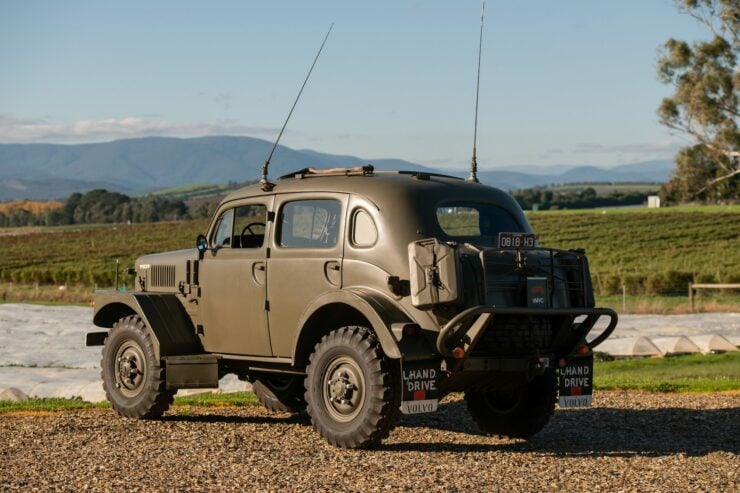

“Cars are driven by people. The guiding principle behind everything we make at Volvo, therefore, is and must remain, safety.” — Assar Gabrielsson and Gustav Larson, 1927
In 1927, Volvo introduced its first production car, the ÖV4, also known as the “Jakob.” A ruggedly built vehicle with advanced features for its time, the ÖV4 paved the way for all of the Volvos that would follow.
In the 1940s and 1950s Volvo established itself as a pioneer in automotive safety – well before it became a. major concern for most other automakers. Volvo’s introduction of the laminated windscreen, three-point seat belts, and padded dashboards were soon copied by other automakers around the world.
Perhaps their most important innovation was the three-point seat belt, it was developed by Volvo engineer Nils Bohlin. Unusually, the automaker opted not to patent the design – they felt it was an invention so significant that it needed to be shared openly with other automakers for the greater benefit of society.
The company entered the U.S. market in 1955, quickly gaining a reputation for vehicles that were both safe and reliable – a reputation they still enjoy today. Volvo extended its influence beyond automobiles by venturing out into other sectors, including buses, trucks, construction equipment, marine engines, and aerospace components.


Despite their focus on safety Volvo became successful in the world of motorsport – both in rally and tarmac-based competition. A Volvo PV544 bought and driven by Joginder and Jaswant Singh won the Safari Rally in 1965, other Volvos competed in the Monte Carlo Rally, and the company would win the European Touring Car Championship in 1985.
Some celebrities were drawn to Volvos, perhaps the most memorable was Paul Newman who was a huge fan of Volvo station wagons, which he used to engine swap and turn into sleepers.
The Volvo TP21 Sugga
The Volvo TP21 Sugga was developed as the direct successor to the earlier Volvo TPV which had been developed as a Swedish-built 4×4 during WWII as an answer to the American Jeep. Whereas the TPV had been relatively primitive, the TP21 had been designed in a less hurried fashion specifically to address some of the shortcomings of the earlier vehicle.
Above Video: This is by far the best verbal history on the Volvo TP21, it was made by the experts over at the Arsenalen Sveriges Försvarsfordonsmuseum, or the Sweden’s Defense Vehicle Museum.
The Volvo TP21 was based on a shortened Volvo truck chassis which was then fitted with a modified version of the all-steel body used on the Volvo PV831 sedan – a vehicle commonly used as a taxi in Sweden. The name “Sugga” came from the Swedish word for “Sow,” a female pig, based on the looks of the PV831. The nickname would follow the body and also be applied to the TP21 4×4.
Power was provided by the Volvo 3.67 liter flathead inline-six engine fitted with a Rochester carburetor. It produced 90 bhp at 3,600 rpm which was good for a top speed of 65 mph, though the vehicle was typically only rarely driven at these speeds.
Power was sent back through an unsynchronized four-speed manual transmission and a dual-range transfer case. The transfer case offered both high and low range, and the Sugga was fitted with vacuum-lockable front and rear live axles riding on leaf springs.
As was standard for the time drum brakes were used front and back, and the vehicle used a six volt electrical system, though the military radio system had a 12 volt circuit for driving the radio system as well as a large aerial.
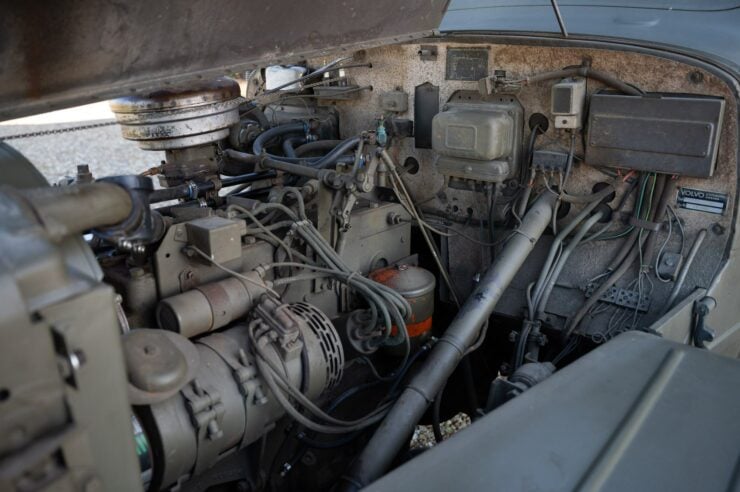

The TP21 was developed in the early 1950s, first shown in 1951, and officially put into production in 1953. Volvo did try their luck at a civilian version, not dissimilar to the Dodge Power Wagon in its concept, though it never caught on and apparently only two were made.
720 military versions of the Sugga were made, as staff cars, troop carriers, and radio vehicles – the latter were called Radiopersonterrängbil in Swedish, or “cross-country radio vehicles.” The Swedish armed forces are said to have kept some examples of the Sugga in active use until the 1990s, an extraordinarily long lifespan.
Now the surviving examples are all in private hands, or in museums, and we only see good examples come up for sale rarely.
The 1954 Volvo TP21 Sugga Shown Here
The vehicle you see here is a 1954 Volvo TP21 Sugga and interestingly it’s believed to be the first of its kind ever imported into Australia.
This Sugga was originally used by the Swedish military, it was equipped as a radio officers command car, and as such it was fitted with a tall, roof-mounted antenna, and communications equipment in the rear of the cabin, including a table with slide-out trays, a 600 watt generator, and a 1.8 hp starter motor.
It’s now being offered for sale out of long-term family ownership in Victoria, Australia on Collecting Cars. If you’d like to read more about it or register to bid you can visit the listing here.
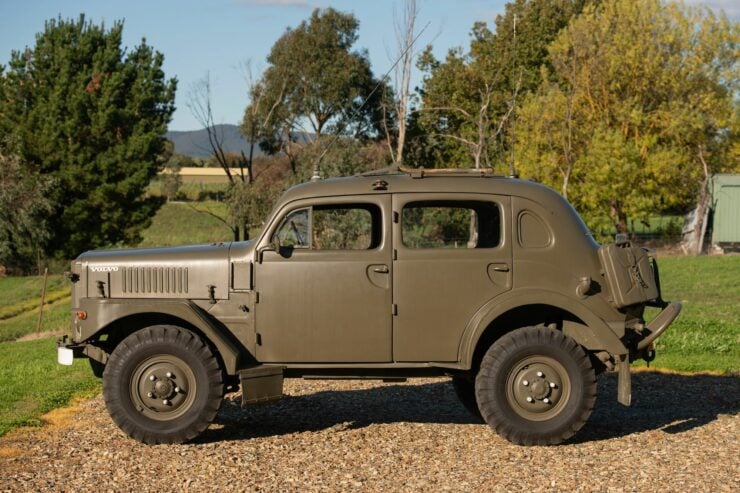
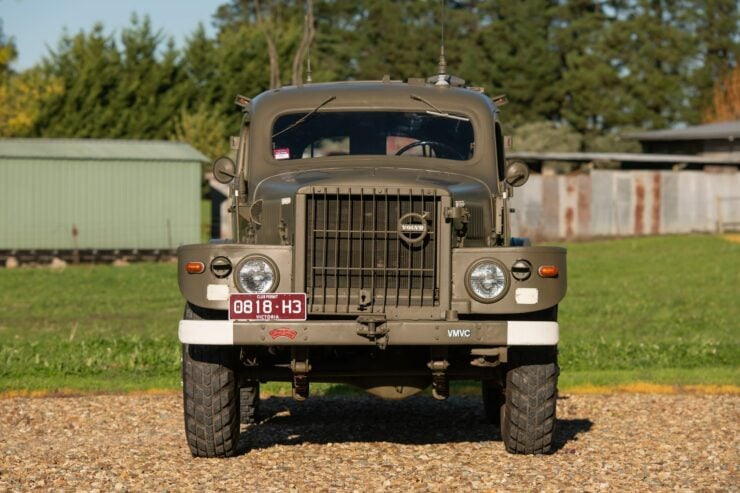
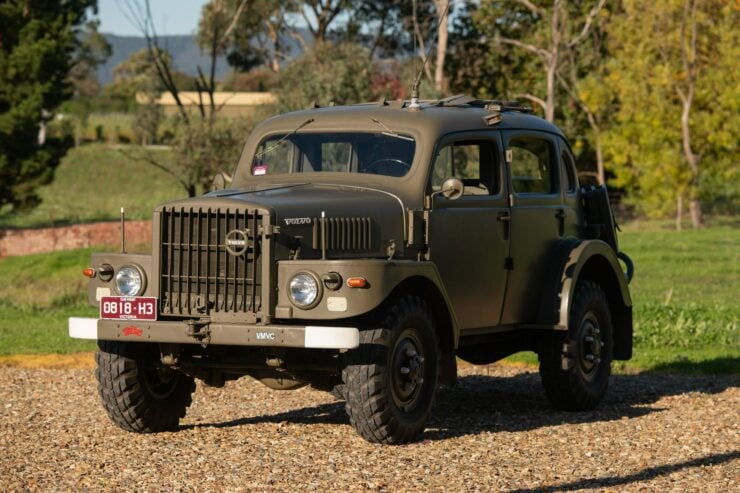
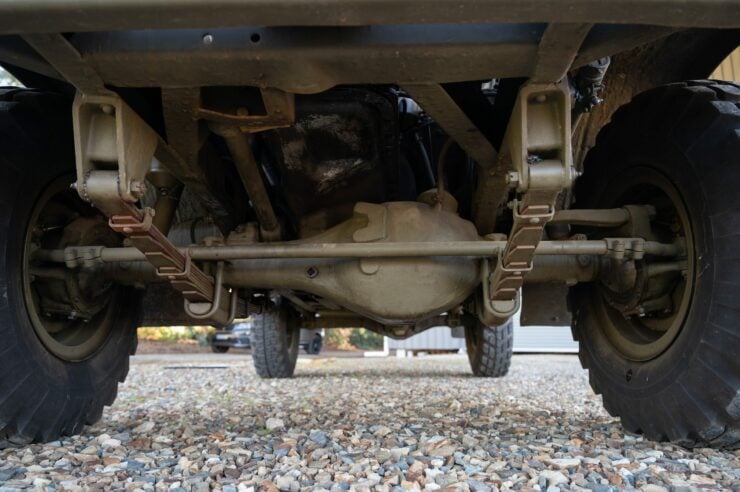
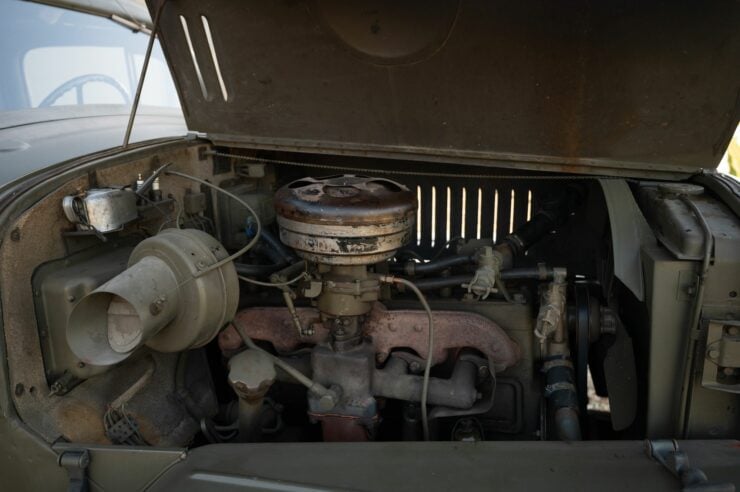
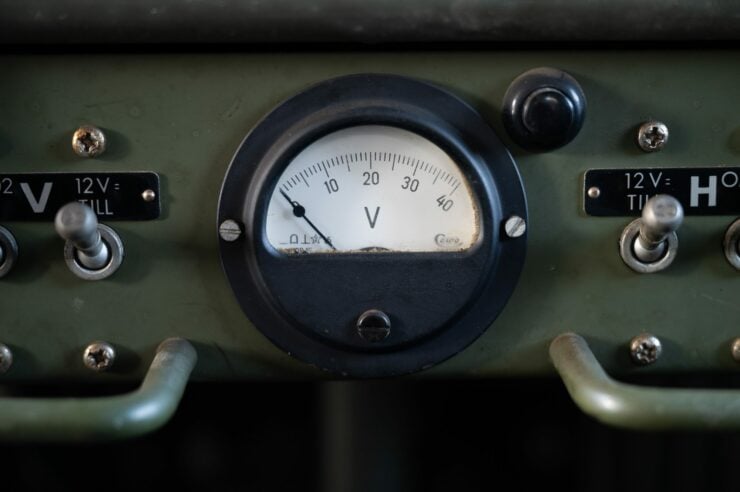
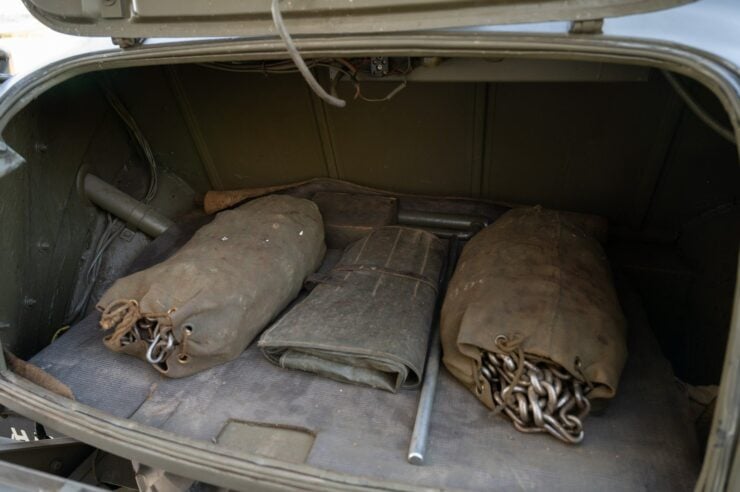
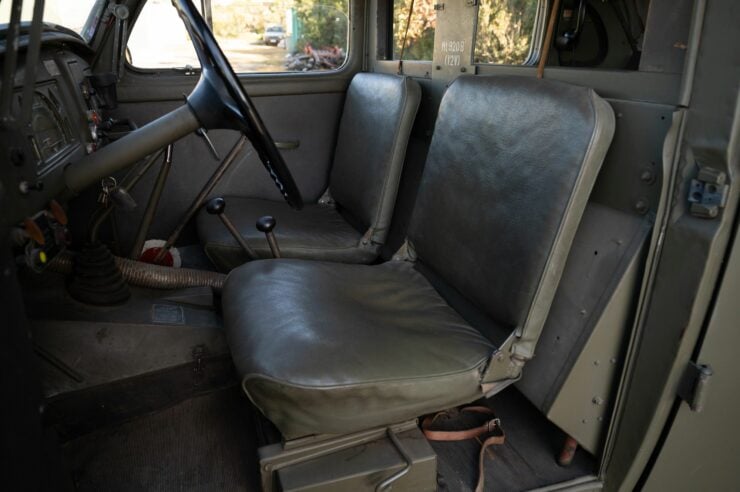
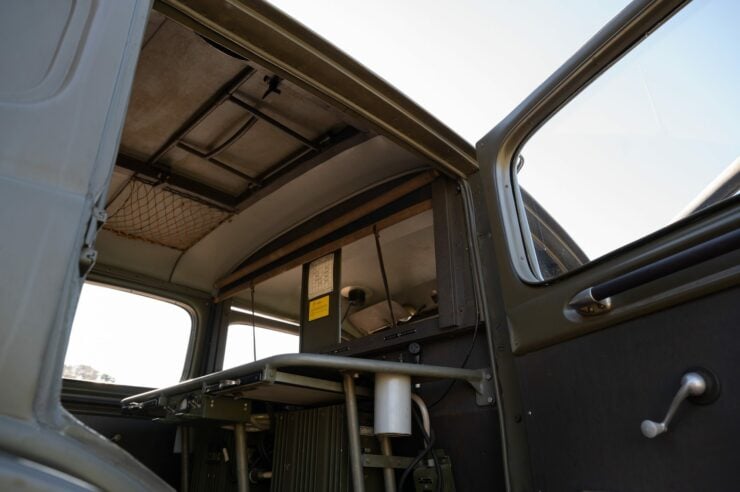
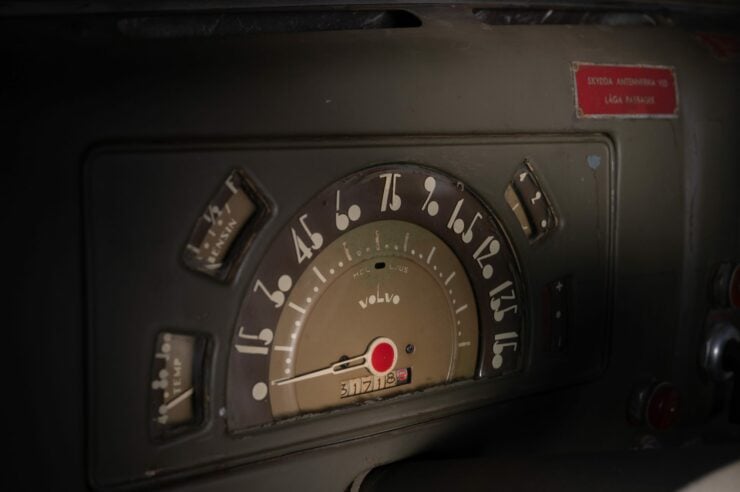
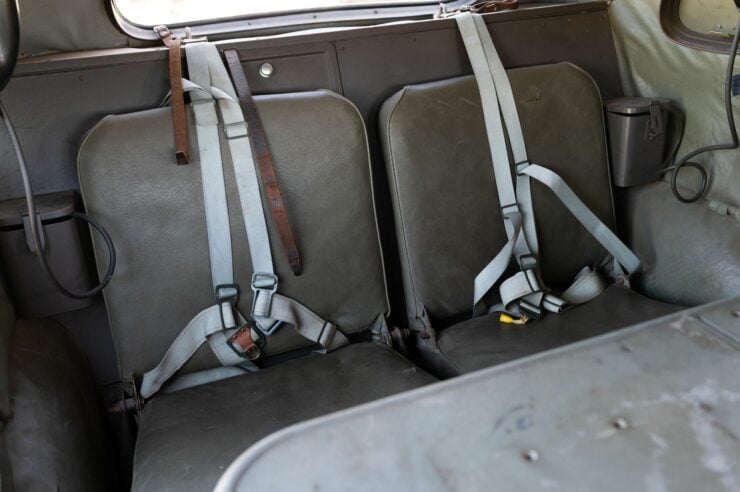
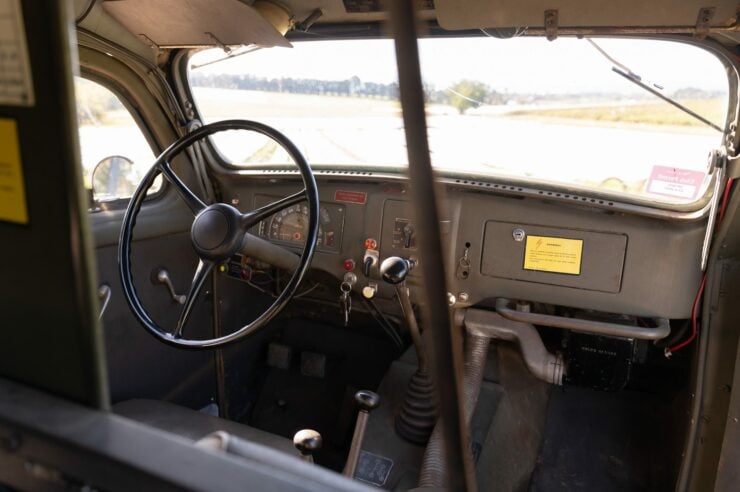
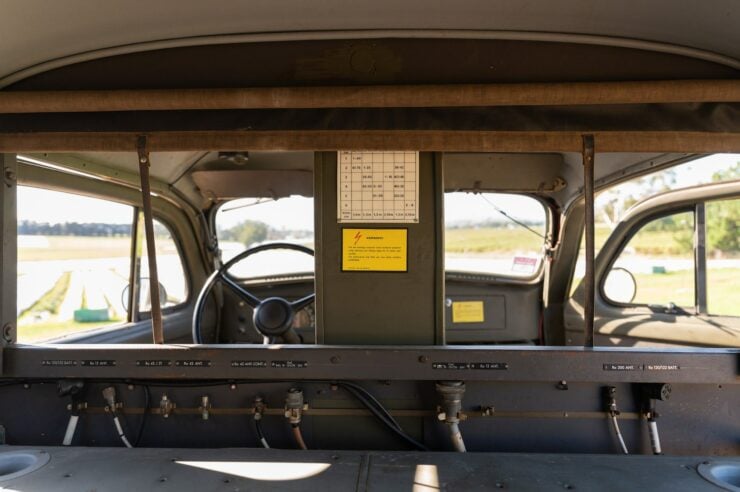


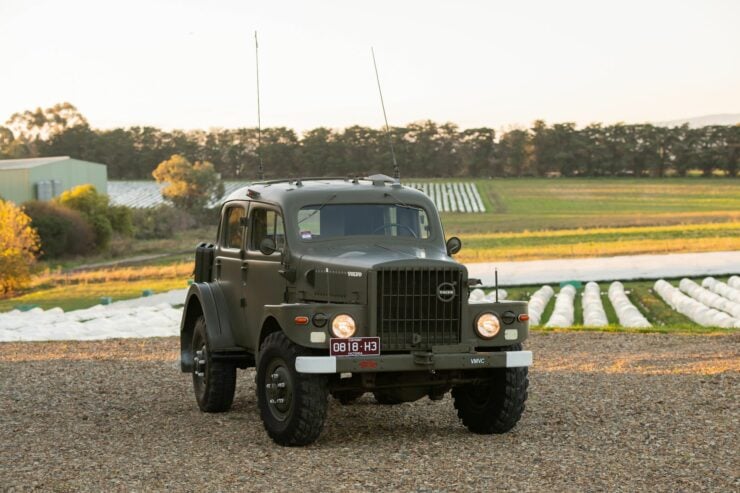

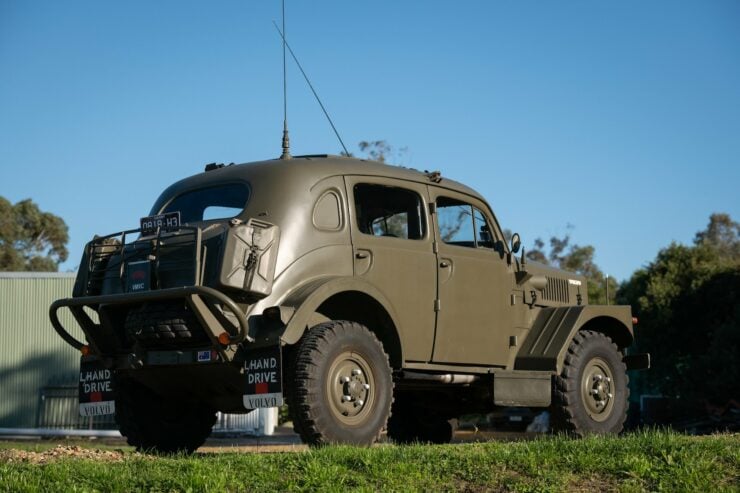
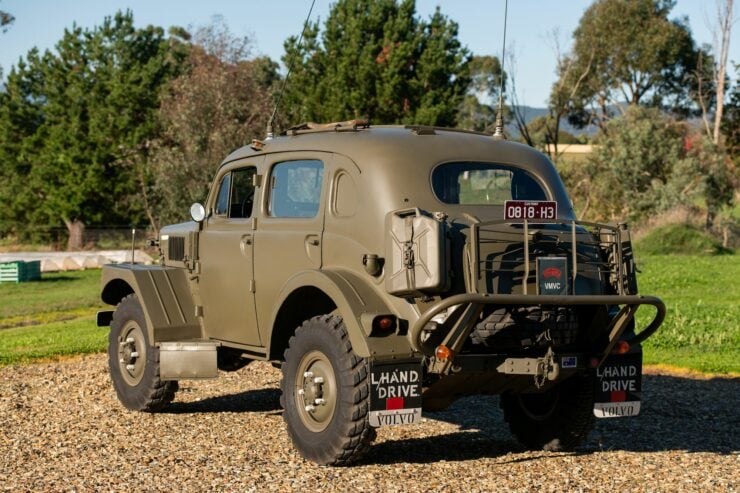
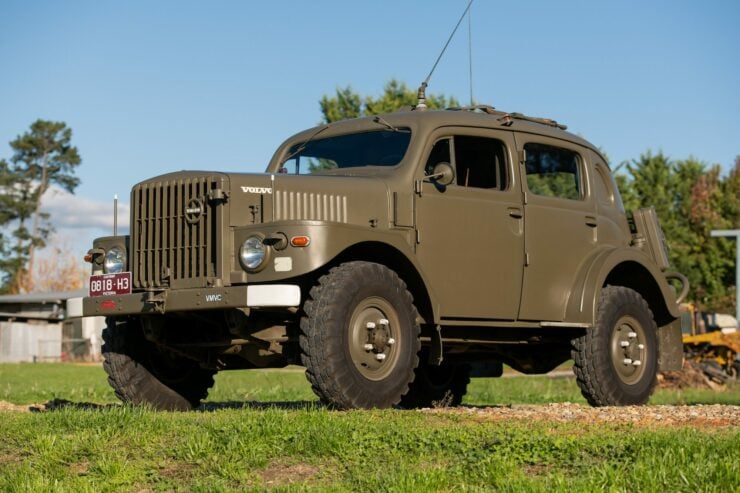
Images courtesy of Collecting Cars

